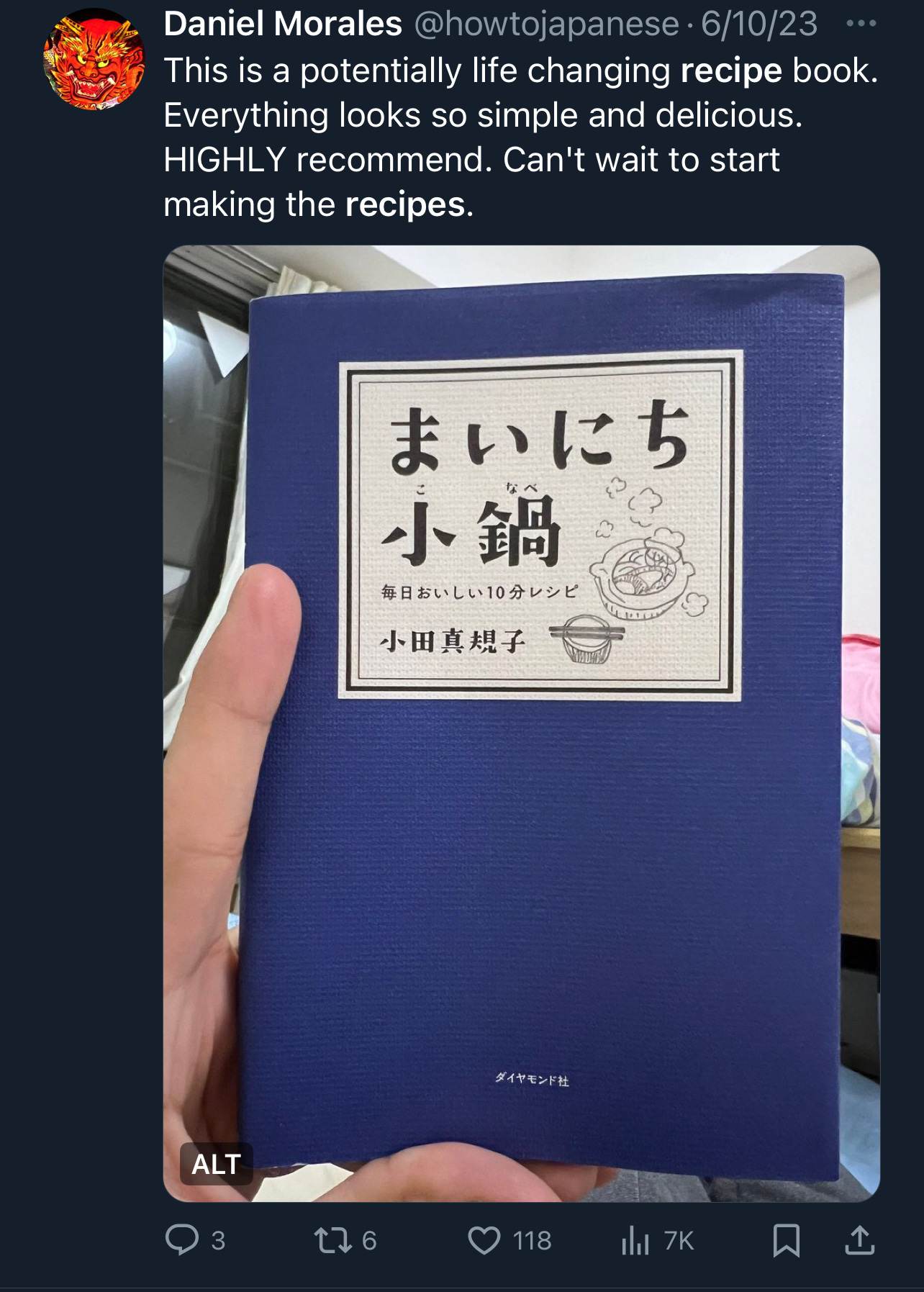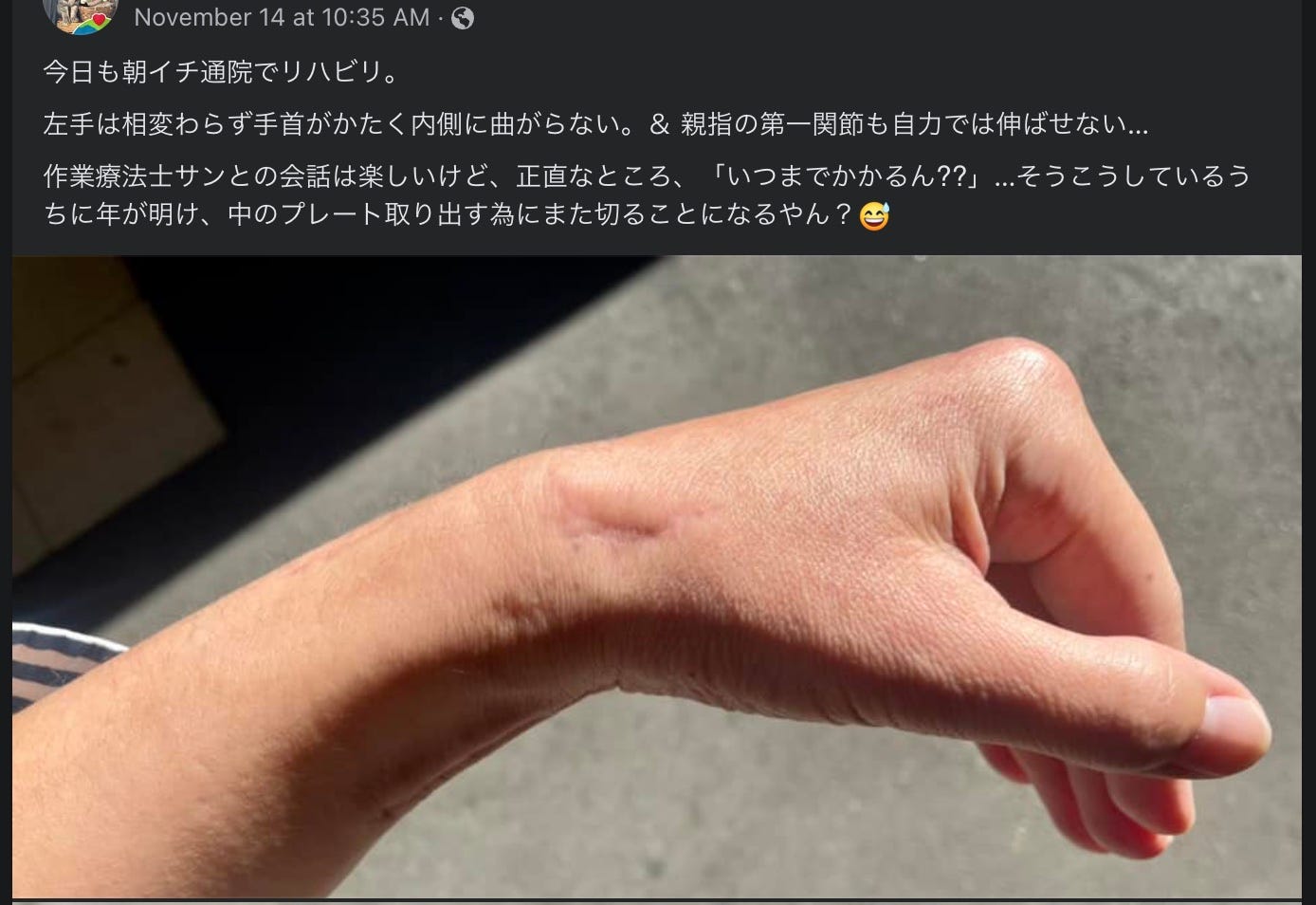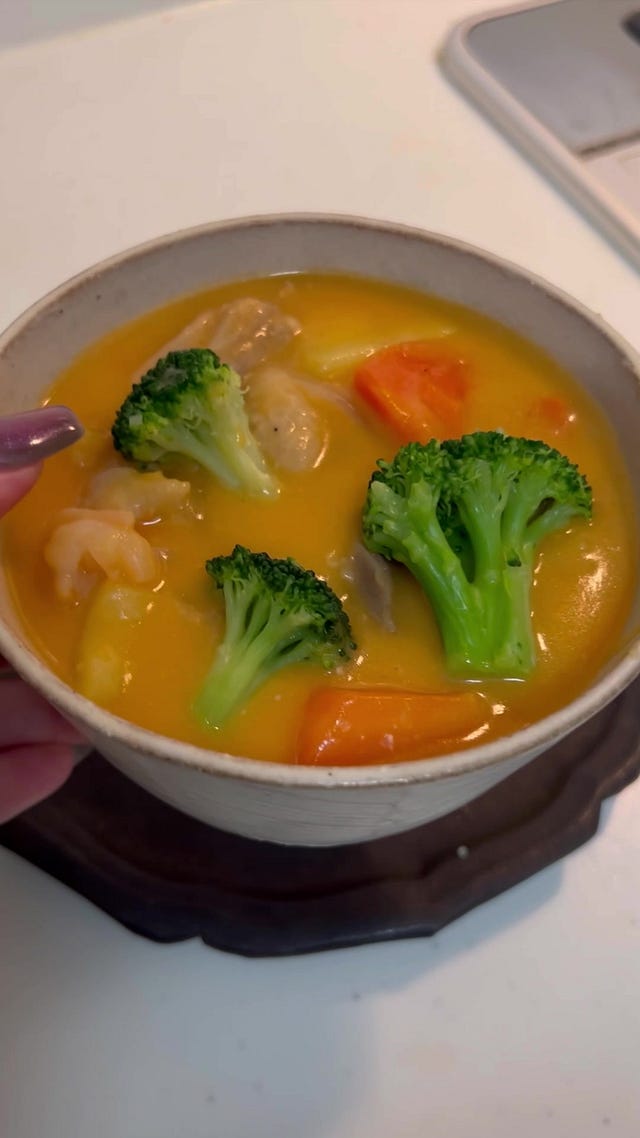This is How to Japanese, a monthly newsletter with something about Japan/Japanese and a dash of いろいろ.
日本・日本語: そうこうしているうちに
A few months ago, we had a conversation on the social chat at work about how much time chores take, and someone shared an article that noted people do an average of six hours each day (that I can’t seem to track down right now). Six hours felt really long to me at first, until a coworker tallied up the time that goes into shopping, cooking, laundry, and cleaning alone, not to mention childcare. It’s easy to understand how language study can get shuffled to the bottom of the list of priorities.
I still think I do fewer than six a day, partially because I try to keep my cooking as simple as possible. I do enjoy cooking, and every now and then I’ll make something extravagant (like on American Thanksgiving, which coincided with Japanese Labor Thanksgiving Day this year), but I have a loose set of easy recipes that I usually repeat in an informal rotation, and I supplement these with preprepared meals from Japanese grocery stores, which are all relatively cheap and healthy. So most days I have something waiting for me at home that I can warm up quickly. Combine that with jogging home from the office, and I can be fed, showered, and exercised all by 7:30pm, even after putting in an hour of overtime.
My go-to cooking strategies are generally:
- Batch cooking in an Instant Pot, often lentils that I pick up from Kobe Spice.
- Super simple recipes like this miso-glazed salmon or this book of so-called 小鍋 (konabe, small pot) recipes.
- Multitasking the cooking and cleaning. (Thus the Instant Pot. I clean up all the prepware while it cooks.)
One of my favorite Tik Tokers is こに (@coni_gohan) who is able to whip up a full-on meal in the time it takes a rice cooker to make 炊き込みご飯 (takikomi gohan, mixed rice).
 Tiktok failed to load.
Tiktok failed to load.Enable 3rd party cookies or use another browser
This video is a good reminder that there’s no magic required to make miso soup. You can throw a bunch of stuff into a pot and heat it up while you’re making the main dish. She also takes the shortcut of microwaving the eggplant while prepping the tofu. These brutal strategies are what’s required to get everything done and still find time to keep your sanity and health. It doesn’t hurt that you can study Japanese while watching her video.
One phrase I liked was the following:
そうこうしているうちに炊き込みご飯ができあがりました。(Sōkō shite iru uchi ni takikomi gohan ga dekiagarimashita.)
As I did this and that, the rice finished cooking.
While TikTok is a great feed for video and audio content, it’s not a great social media platform for text, so it does little good at trying to triangulate how the phrase そうこうしているうちに gets used. It’s easy enough to find a definition online, but sometimes it can be more helpful to get out there and see how these phrases are actually getting use.
For better or worse, the flaming ruins of Twitter still serve as the best way to look for natural phrasing like this. Here’s a state of the other social media networks with a search for “そうこうしているうちに”:
Mastodon: No results at all. I’m not even able to link a search.
Instagram: No results.
Bluesky: Finally, some results. Up until a week or two ago, the site was returning a random set of skeets (not my nomenclature). This will require further research, but it looks somewhat promising.
Twitter gives a really nice set of tweets with the search phrase highlighted in bold, making it easy to pick out. And text heavy it is.
This user is excited their headphones have shipped:
Another has missed their chance to buy an Advent calendar…again:
Twitter’s automated translation here renders そうこうしているうちに into “Meanwhile,” which I don’t think does it justice:
そうこうする is so much more involved. It’s not just the passage of time, it’s everything that happens during that time. そうこうしているうちに is a montage; meanwhile is a jump cut.
Despite all the awful stuff on Twitter, it’s still one of the most interesting and accessible corpora of Japanese language, and I’m determined to outlast the current ownership. They’ll get bored soon enough and get rid of it. I just hope that it survives with some semblance of its current/past self. It would be a tragedy to lose all of this language.
The only platform that even approaches Twitter here is, perhaps surprisingly, Facebook. A search for そうこうしているうちに results in some very interesting posts.
This user notices a rare train and the station and nicely describes the way it heads out without any warning as people are taking photos all around it:
This user writes an update about recovery from surgery and notes how quickly time has passed without much progress:
Things that are immediately evident:
- The posts are so long! Perhaps it’s just the search algorithm leaning towards meatier results, but people write paragraphs and paragraphs.
- There are so many photos! Again, this could be the algorithm (or cross-posts from Instagram?), but in 2023 Facebook in Japan feels much closer to a micro-blogging platform than a social media platform.
Although it launched in 2008, I feel like Facebook didn’t truly “arrive” in Japan until 2012, which is when the students I taught while on JET began to add me there. The older generations have come on, as they have in the U.S., and my sense is that they’re as active in Japan if not more so. A built-in readership of your closest friends perhaps explains why it’s so popular for people looking to connect with others in medium-form text and images. It will be interesting to see if it can sustain growth here, and if younger generations take to the platform as the older generations have, or if the number of active users falls off.
I guess this is a roundabout way of wrapping up this month’s newsletter: Japanese is out there all around us, and maybe not always where we expect it to be; we have to make time for it amongst the hundreds of other tasks that grab our attention, including the ones that sustain us physically each day; and there are ways to multitask and do two things at once.
In the case of cooking, こに is an excellent choice. I also enjoy りーさ (@fujicochan) for more casual conversation:
 Tiktok failed to load.
Tiktok failed to load.Enable 3rd party cookies or use another browser
And ぴーきち (@pikichidesuyo) for B級グルメ:
 Tiktok failed to load.
Tiktok failed to load.Enable 3rd party cookies or use another browser
Over on YouTube, I often check out かっちゃんねる(@kattyanneru) who always has a new recipe. She also speaks very slowly and clearly, and her videos all have Japanese subtitles:
Soon enough, the dinner will be ready and you’ll be understanding and using more Japanese than you ever expected. You can have it all. そうこうしているうちに、日本語ができるようになった。
いろいろ
Substack tells me that the newsletter has gone long this month, so I’ll put the いろいろ over on the blog this month along with the podcast. Give them a read there! Thanks so much for reading How to Japanese this year. I really appreciate all of you, especially those who took time to leave comments or press the like button. I hope you have a great お正月 (the best holiday in the world) and come back refreshed in 2024!













Interesting analysis of the different social platforms for finding language examples! Did you try Threads?
I have been using social media to test out words I'm learning. It's such a helpful way to see how the word actually functions!